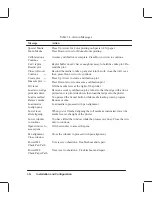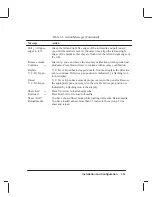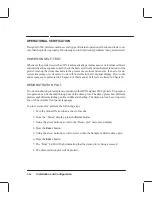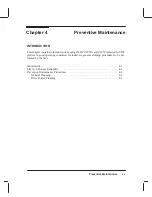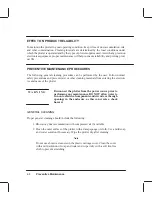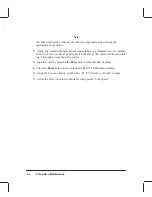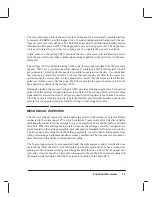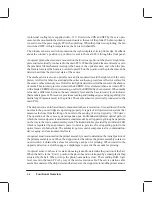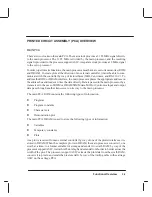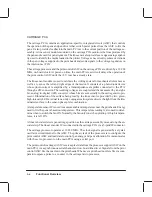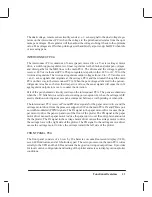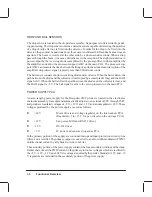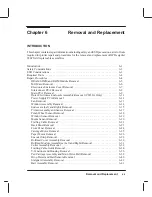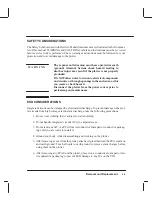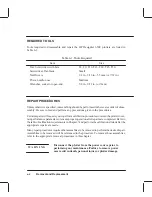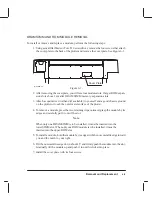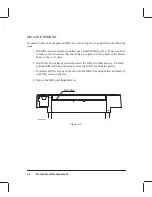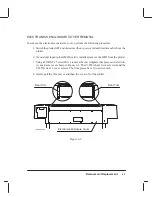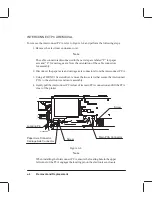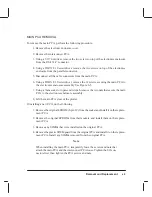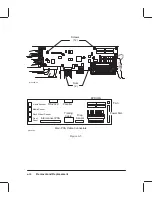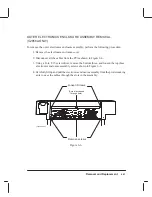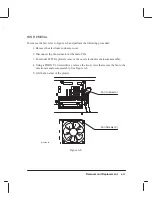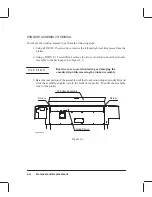
5-8
Functional Overview
DROP AND BAIL SENSORS
The drop sensor is located in the drop detect assembly. Its purpose is to detect ink drops dur-
ing pen testing. The drop sensor contains a detector system capable of detecting the presence
of a drop shortly after one is fired into the detector. In order for the drop to be fired into the
detector, the pen must be positioned over the sensor. An infrared LED sends a beam across an
aperture. The beam is received at the other side by a photo-sensitive diode. When a drop
passes through the beam, it causes a disturbance in the reception. The slight modulation in
power output by the receiving diode is amplified by the pre-amplifier, further amplified by
the amplifier, and sent to the processor support ASIC on the main PCA. The processor sup-
port ASIC can measure the time between the firing of a print head nozzle and reception of the
amplified, drop-detect signal, typically less than 900 microseconds.
The bail sensor consists of a photo-emitting diode and a collector. When the bail is down, the
path between the diode and the collector is interrupted by a small plastic flag, and the BAIL
signal is 0 V. When the bail is lifted, the path between the diode and the collector is clear, and
the BAIL signal is +5 V. The bail signal is sent to the servo processor on the main PCA.
POWER SUPPLY PCA
An auto-ranging power supply for the DesignJet 650C plotter is located in the electronics
enclosure assembly. It accepts and automatically adjusts to an ac input of 90 V through 264 V
and produces regulated voltages of +5 V, +12 V, and –12 V and an unreg24 V. These
voltages produced by the power supply are used as follows:
+24 V
Motor drivers and voltage regulator on the interconnect PCA.
(Reg9 to +15 V for pen circuits on the carriage PCA).
+12 V
Fan power, MIO and RS-232 driver.
–12 V
RS-232 driver.
+5 V
IC power and sensors, drop sense PCA.
In the primary portion of the supply are contained fusing and input protection circuitry, line
filters, and a rectifier. The primary output is converted to a pulse-width-modulated (PWM),
unidirectional current by a flyback dc-to-dc converter.
The secondary portion of the power supply contains the four secondary windings of the trans-
former that convert the PWM current in the primary to four ac voltages which are rectified to
the +5 V, +12 V, –12 V and +24 V dc voltages required by the plotter. St12 V and –12
V regulators are included in the secondary portion of the power supply.
Summary of Contents for C2858A
Page 125: ...7 10 Adjustments Calibrations Notes ...
Page 155: ...9 4 Product History Notes ...
Page 164: ...10 9 Parts and Diagrams Illustrated Parts Breakdown C2859A Electronics Enclosure C C2858 3 1 ...
Page 166: ...10 11 Parts and Diagrams Illustrated Parts Breakdown C2858A Electronics Enclosure C C2858 4 1 ...
Page 182: ...10 27 Parts and Diagrams Illustrated Parts Breakdown Paper Drive Assemblies C C2858 12 1 ...
Page 198: ... ...

